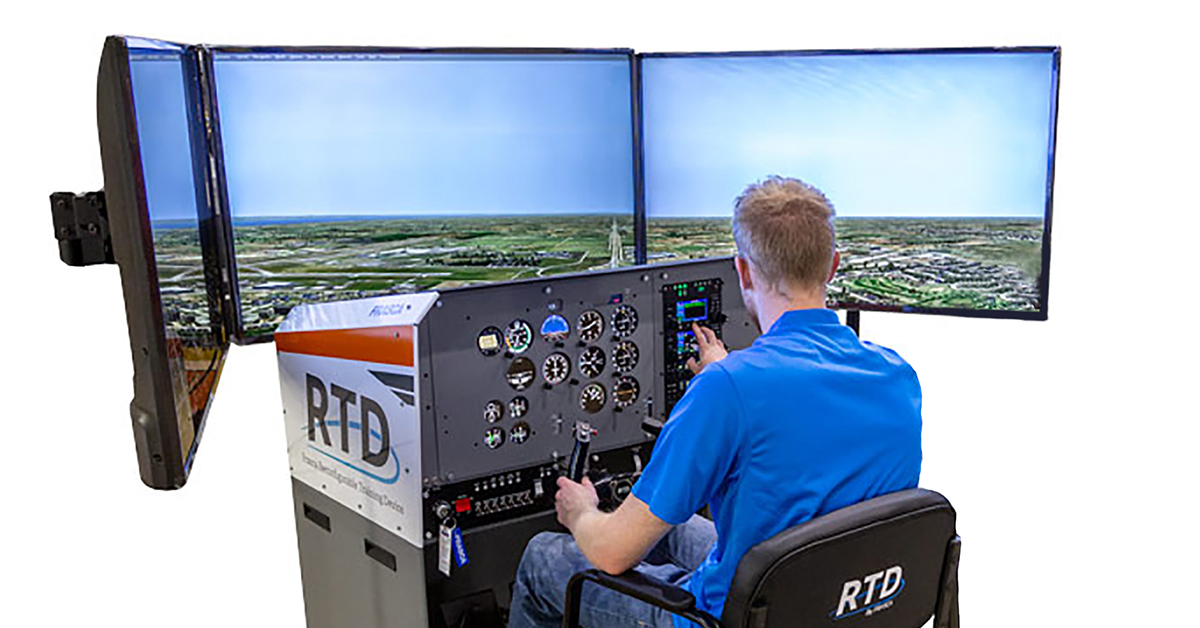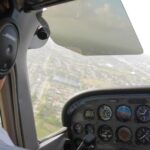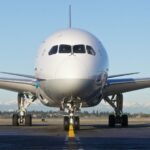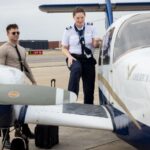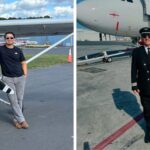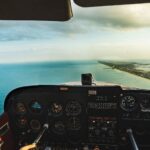By: Steven Daun, National Chief Pilot
The American Flyers that exists today is the result of a combination of two renowned flight schools: Aviation Training Enterprises and American Flyers. Aviation Training Enterprises (ATE) was started by Monty Montgomery which became known as a leader in instrument training for civilian pilots in the United States. While ATE purchased American Flyers in 1980, primarily for the name, all the materials, procedures, processes and intellectual property that American Flyers uses today is a direct result of what Monty developed back then.
Monty was a simulator instructor for the United States Army Air Corps before World War II. At that time, the simulators were installed on railway cars and moved between air bases along with the instructor. These simulators were complex machines for the day, but relatively simple in terms of their function. They were primarily used for basic attitude instrument flying and basic navigation. Most of the exercises completed were solely focused on basic skills, partial panel and emergency procedures. There were no motion or visual displays and they weren’t specific to any one aircraft. Today these are known as AATDs (Advanced Aviation Training Device).
After the war, Monty set up an instrument training school above a butcher shop across from Midway Airport in Chicago, using several used surplus Link Trainers from the military.
In 1958 Rudy Frasca, who taught with Monty in the Army Air Corps simulators, designed a new type of simulator. He presented his designs to Monty, which resulted in Frasca Aviation having their first simulator order.
The simulator was used for primary instrument skills. The only bells and whistles were the two VOR Heads at the bottom of the panel. The standard six-pack had not been developed yet. A large cover closed over the pilot’s head, creating a silent, dark environment.
While the pilot was flying inside the simulator, the instructor would sit at a desk outside of the simulator. A large black device known as a “spider” showed the aircraft’s location to the instructor. The instructor was able to communicate with the pilot through an intercom setup at the bottom right of the table. It was basic but quite functional.
Over the years since the Frasca Simulator Model 1, American Flyers has worked closely with Frasca and always valued that historical relationship. A few years ago, American Flyers decided it was time to start planning for an upgrade to their AATD simulator fleet. During this process, a realization of the changing simulator industry became apparent. The new devices have become more complex in design and in operations, most of which are not crucial for primary flight and instrument training. With these additional complexities came a tremendous price, which made many of these devices cost prohibitive.
After researching all the available options, American Flyers once again turned to Frasca. American Flyers was looking for a back-to-basics simulator, which would allow the instructors to teach basic attitude flying, procedures, emergency procedures and other necessary skills. Fancy automated flight systems, motion, and wrap-around screens are not needed to train good pilots. American Flyers needed a basic six-pack, which would be able to reinforce instruction within the airplane.
Frasca suggested their brand new RTD model, shown to the left. Designed simple and easy to use, the RTD is functionally convertible from a six-pack to a G1000 by only removing six screws.
American Flyers is excited to take delivery in early 2019!




